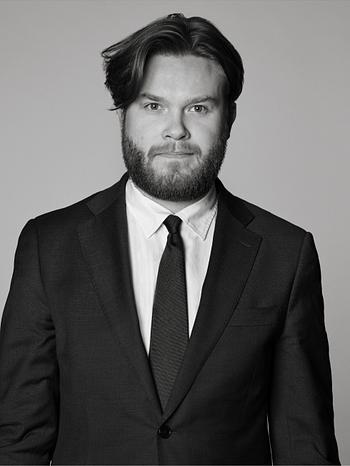Bruno Liljefors
Brooding eider
Signed Bruno Liljefors and dated 1903. Canvas 90 x 150 cm.
Provenance
Ernest Thiel Collection.
Bukowski Auktioner AB, auktion 466, Internationella Vårauktionen, April 25-28, 1989, cat. no. 121.
Larsson konsthandel.
Private collection, acquired from above in the 1990s.
Exhibitions
"The World Fair Exhibition", St Louis, 1904.
More information
In the 1890s, Bruno Liljefors discovered a new environment that had a significant impact on his artistic expression, namely the archipelago. He became fascinated by its landscape, so different from the one he had grown up in. The current painting at the auction is a prime example of the artist's numerous depictions of eiders in the archipelago landscape.
This is how Bruno Liljefors describes the resting eider duck, also known as "åda":
"The åda's color closely resembles the brown base, but only when she has come ashore and laid herself on her eggs on the open skerry, and her brown-mottled back blends with old dry heather and moss, does her protective color come into its full right. Her round, clear eye is usually the first thing the observer discovers, although he may initially mistake it for a knothole in a dry root."
Allan Ellenius writes about this painting:
"The combination of detailed studies and plein air painting provides a synthesis of the entire archipelago landscape from various perspectives: the åda sheltered by heather tufts up close, the wide view towards the ultramarine sea, and the break at the horizon."
Artist
Bruno Liljefors is the Swedish artist best known for his nature and animal motifs, especially in dramatic situations. Liljefors started with studies at the Academy of Arts in 1879, and continued 1882 in Düsseldorf where the studies revolved around animal painting. The journey then continued to Venice, Rome, Naples, Paris and Grez. Once back in Sweden, he began to draw and paint animals, especially cats and small birds, from the beginning in intimate interaction with nature. He then moved on to broader depictions of wild animals and nature, of seascapes with seabirds and of dramatic scenes of battles between birds. Liljefors is known as our country's foremost animal painter with a large production. Liljefors depicted, in contrast to the "idyllic" animal painting, the animals everyday life with a focus on movement, anatomy and their adaptation to the landscape. This is where the greatness of his painting lies, in the ability to show the animals in their proper environment. He has achieved this by hunting and observing. Well-known works of art are the paintings "Rävfamilj" (1886) and "Havsörnar" (1897), as well as the sculpture "Lek" (1930) at Stockholm Stadium. Liljefors is mainly represented at the National Museum, Waldemarsudde and the Thielska gallery in Stockholm.
Read more



















































